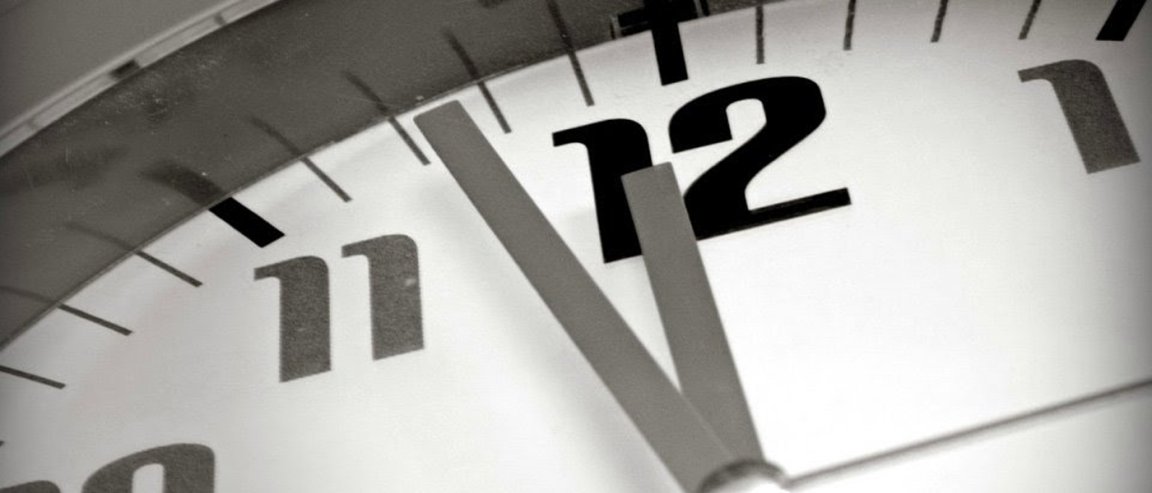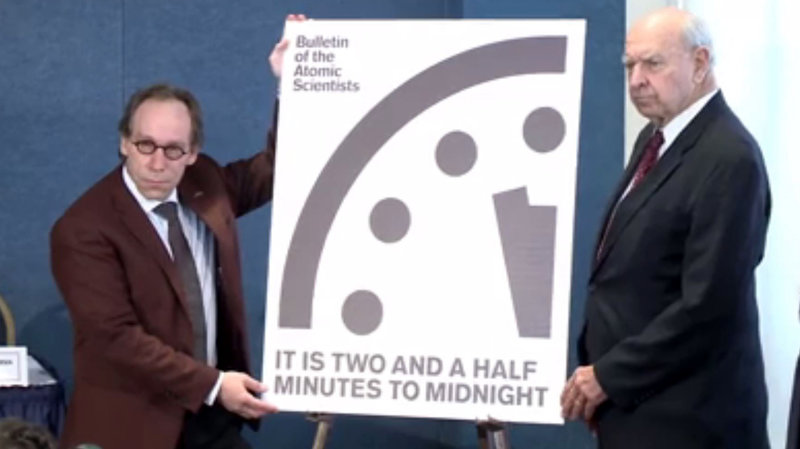
SIGNS OF THE TIMES
The Bulletin of the Atomic Scientists announced that the symbolic Doomsday Clock now reads two and a half minutes to midnight, reflecting growing climate change and nuclear warfare concerns. This “unprecedented” thirty second adjustment marks the closest the clock has ever been to midnight since 1953. Back then, scientists moved the clock to two minutes before midnight as a result of the hydrogen bomb tests conducted by the U.S. and the U.S.S.R. It stayed there until 1960.
Originally created in 1947 by the scientists who were involved in the Manhattan Project, the Doomsday Clock was meant to monitor the likelihood of nuclear conflict. It’s purpose has since been amended to include other threats including climate change, cyberthreats, and biological warfare. “Make no mistake, this has been a difficult year,” said executive director and publisher of the Bulletin of the Atomic Scientists, Rachel Bronson during Thursday’s announcement of the clock’s new setting.
The Bulletin’s Science and Security Board puts it clearly:
Over the course of 2016, the global security landscape darkened as the international community failed to come effectively to grips with humanity’s most pressing existential threats, nuclear weapons and climate change … This already-threatening world situation was the backdrop for a rise in strident nationalism worldwide in 2016, including in a U.S. presidential campaign during which the eventual victor, Donald Trump, made disturbing comments about the use and proliferation of nuclear weapons and expressed disbelief in the overwhelming scientific consensus on climate change. […] And his nominees to head the Energy Department, and the Environmental Protection Agency dispute the basics of climate science.
The message was rather blunt and critical of President Trump. “As we marked the 70th anniversary of the Doomsday Clock, this year’s Clock deliberations felt more urgent than usual…as trusted sources of information came under attack, fake news was on the rise, and words were used by a President-elect of the United States in cavalier and often reckless ways to address the twin threats of nuclear weapons and climate change,” Bronson said.
WINDING IT BACK

It is possible to wind the clock back, just like in the 1950s. First, we must work together to fight the key issues the Doomsday Clock represents – especially the climate problem. To that end, while the new White House administration may be taking regressive action, other institutions continue the fight. For example, state lawmakers in Massachusetts recently filed a bill that aims to require the state to use 100 percent renewable energy by 2050.
Then there’s the Paris Climate Agreement, which almost 200 hundred countries signed. Other global efforts include the increased use of solar energy. Perhaps most popular among these is Tesla’s 100 percent solar powered microgrid in the island of Ta’u. In other places, Dubai pushes for total solar energy dependence by 2030, while Chile is generating so much power through solar energy that it’s giving some away for free.
Still, the Doomsday Clock is a good wake up call. Speaking at the National Press Club event where the announcement of the clock’s adjustment was made, physicist Lawrence Krauss gave a stern warning: “Facts are stubborn things and they must be taken into account if the future of humanity is to be preserved.”